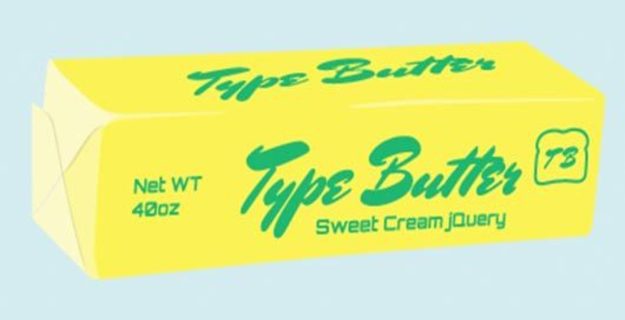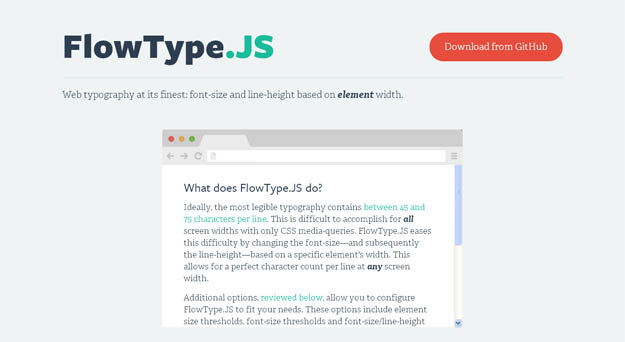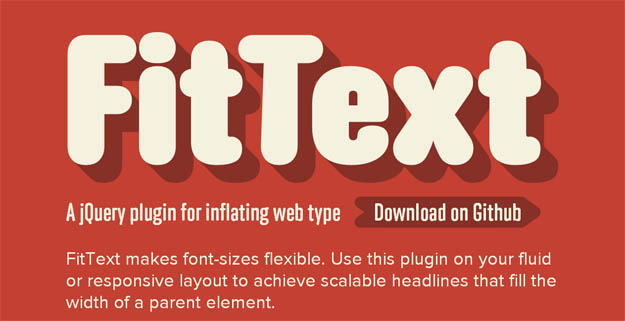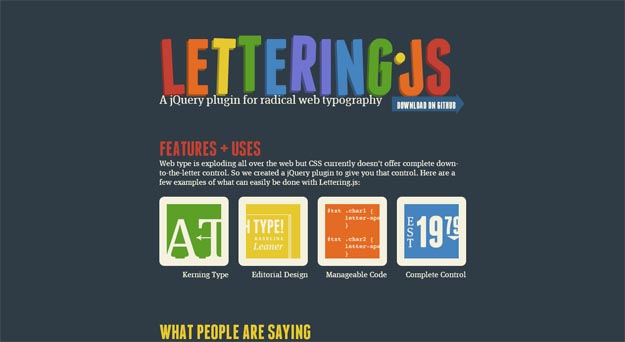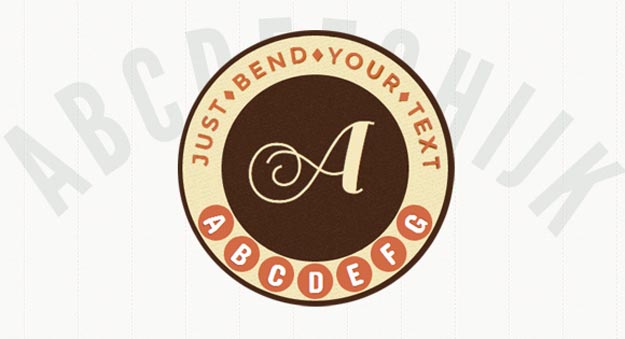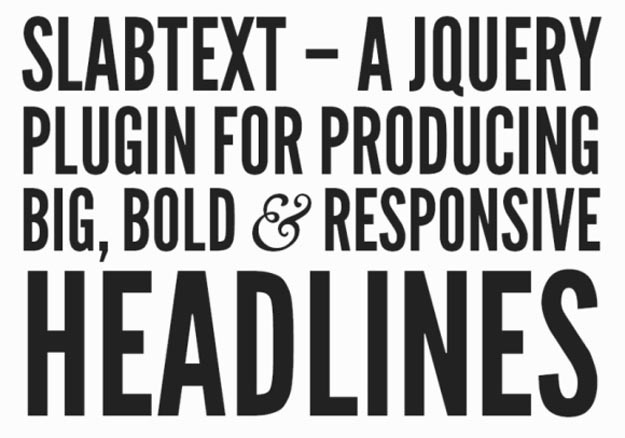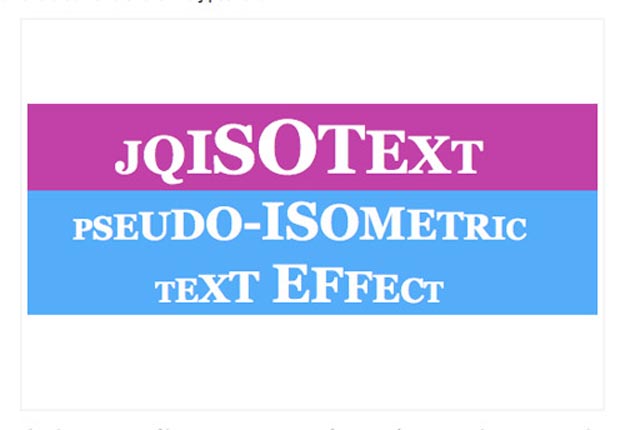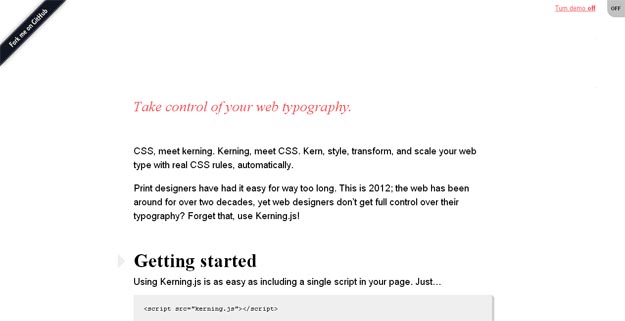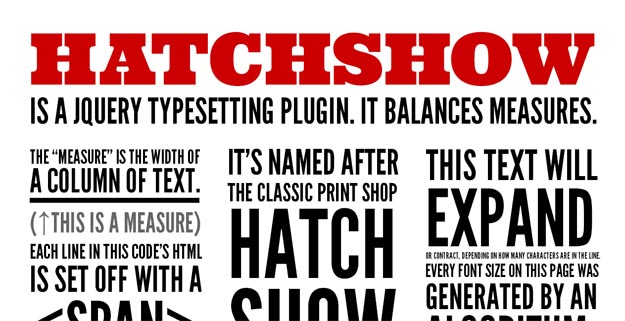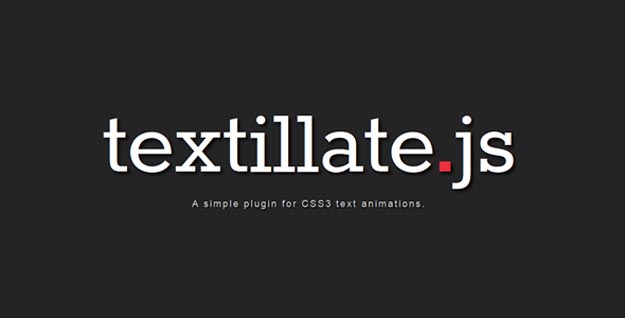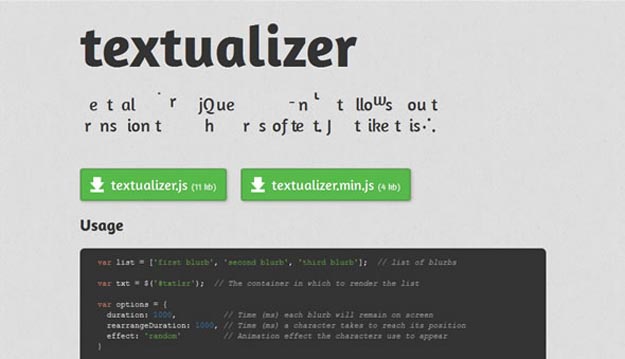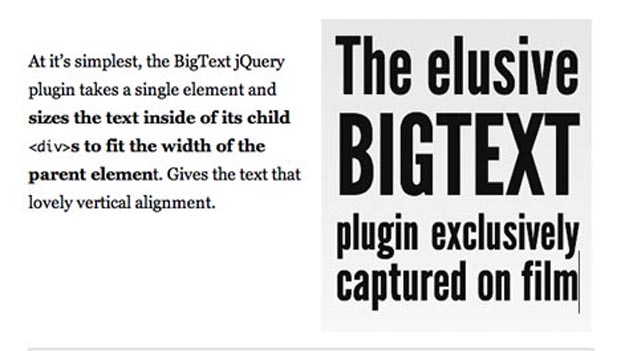http://thedesignblitz.com/best-jquery-plugins-august-2013/
jQuery is a multi-browser JavaScript library designed to simplify the client-side scripting of HTML, make event handling, animation, and Ajax much simpler with an easy-to-use API across various browsers. Over the years jQuery has been blending versatility with extensibility making people witness oodles of changes in the ways it can be written. jQuery plugins as you all know are the javascript frameworks that are best used for designing and development.
These days more and more creative minds are opting for writing jQuery plugins as the genre to help people in web development and designing. Each day we keep coming across many useful jQuery plugins that promise to be if great help.
There are indeed thousands of plugins available online but surfing the web for long to find the best bet for yourself can be bit too time consuming. If you are the one who wishes to keep the track of these jQuery Plugins rolled out every now and have time crunch then I am sure you know what’s the deal. Each week we post best jQuery plugins for you all to check out and download the ones you find useful for your task handling. Incase, that too is a big hassle then here we have come up with the list of Best jQuery plugins on monthly basis too.
Take a closer look at the best and latest jQuery plugins of August 2013 that we have selected for you.
Best jQuery Plugins of August 2013
1. Digital Slideshow
Digital Slideshow is a jQuery Plugin that can be used in opensource commercial projects and is available for free download.
2. jQuery.BgSwitcher
As the name hints its a jQuery plugin that enables the users to switch the background image with effect.
3. jQuery.Feyn
Feyn is a jQuery plugin to let you draw Feynman diagrams with Scalable Vector Graphics (SVG). Fully loaded with cool features, this plugin asks you to first load the scripts found in the distribution to proceed further. Without loading the scripts it in not possible for any person to use this plugin.
4. AnimatedScroll.js
AnimatedScroll.js developed by Yevhen Tiurin is a jQuery plugin that enables smooth, animated document scroll to a specific element, supporting native jQuery UI easings.
5. Glowspot background hover effect
Glowspot background hover effect by Graham Breach as the name hints displays a glowing area in the background of the selected elements using an HTML5 canvas. Move your cursor over the tabs above to see the effect. This work in Firefox, Chrome, Opera, IE9 and Safari.
6. jQuery Wikipedia
jQuery plugin is for easy reloading of data from Wikipedia about Wikipedia API using JSON. It is important to pass the invite to a Wikipedia page title.
7. jQuery Nice file Input
The jQuery Nice File Input Plugin by Jaydev Gajera provide batter looking file input HTML element besides making all kinds of customizations to fit your application without any fuss.
8. EasyDataTable AJAX Pagination jQuery plugin
EasyDataTable AJAX pagination plugin by ray is simple, clear, easy to use, flexible, comprehensive, has its own tabs, supports sorting and much more.
9. AnimateScroll
AnimateScroll by Ram Swaroop is a jQuery plugin that allows users to scroll to any part of the page in style easily by animatescroll function with the Id of the element where you want to scroll to. The best part is that it supports more than 30 unique scrolling styles.
10. 3dEye.js
3dEye.js by Paul Shan is a lightweight jQuery plugin has the ability to make a 3D view of an object with minimal effort. This plugin is cross browser supportable, and runs smoothly in iOS and Android.
11. Starscroll – A parallax scrolling starfield
Starscroll is a jQuery plugin that adds a fullscreen starfield, generated in canvas, controlled by css to any div. The parallax responds when user scrolls.
12. Juicy Slider
Juicy Slider by Van Ting is a responsive slider/slideshow plugin for jQuery. This jQuery plugin adjusts image size by computing the corresponding aspect ratio of images and viewport. 
13.flipLightBox – Responsive Lightbox jQuery Plugin
flipLightBox is a responsive Lightbox that is extremely easy to implement and doesn’t require additional stylesheets, scripts or libraries.
14. jQuery Matt Tabs
jQuery Matt Tabs by Matt Hall is a simple jQuery plugin that enables users to create tabbed interfaces.
15. jQuery URL Shortener
As the name clearly hints jQuery URL Shortener plugin helps in shortening URLs using Google URL shortener API.
16. Retinize
Retinize is a jQuery plugin that helps in upscaling images to give that perfect looks correctly on retina screens and is particularly useful for pixel art when you don’t want to store an upscaled version.
17. jQuery Scrollbox
jQuery Scrollbox is a simple and lightweight jQuery plugin that allows users to scroll a list like carousel or traditional marquee.
18. jQuery finderSelect
jQuery finderSelect is a jQuery plugin that activates file explorer type selecting to all elements supports Ctrl+Click, Command+Click, Ctrl+Drag, Command+Drag and Shift+Click.
19. Yet Another DataTables Column Filter (Yadcf)
Yadcf is a jQuery plug-in lets users easily add filter components to table columns and works on top of the DataTables jQuery plug-in.
20. jQuery noInput
Developed by Harold S. Henry its a jQuery plugin that displays inline labels similar to HTML 5′s placeholders that lets you style the placeholder text.
21. HeapBox
As a webdesigner/webdeveloper you know how hard it is to deal with native HTML forms look or functionality. Heapbox is a jQuery powered by jQuery helps write JavaScript with ease.
22. QUAIL
Quail by Kevin Miller is a plugin that focuses on checking content against accessibility guidelines.
23. jQuery Tippy
Tippy is a jQuery plugin that makes it very easy for the users to create simple, flexible and powerful tooltips for website using jQuery. It is a customizable plugin with default options carefully configured to make it easy for anyone to get started.
24. jQuery Color Picker Sliders
jQuery Color Picker Sliders is an advanced color selector with support for human perceived lightness. The plugin promises to work in all modern browsers and on touch devices and it’s responsive. This color picker sliders works internally in the CIE Lab color space represented with the CIE Lch color model.
25. SKDZoom – Stylish image zoomer
SKDZoom is a jQuery stylish CSS3 image zoomer that comes with rounded box and Lens zoom support, easily customizable color and other options.
26. jquery tags plugin
jQuery tags plugin promises to help developers visualize their tags in a neat user interface that too with just a single line of code.
27. Simple HTML5 Music Player
Simple HTML5 Music Player is a plugin dedicated to music lovers. Its a skin-able HTML5 Audio player that offers a custom design alternative to the generic browser rendered player.
28. jQuery Dashboard Portal
jQuery plugin for Dashboard with layout lets users add forms, presentation, an manage projects depending upon the need.
29. Image Scale
Inspired from Sproutcore SC.ImageView, the image scale jQuery plugin lets you scale images with ease besides letting you fit or fill any target container through two simple properties viz scale and align.
30. Flapper
Flapper is a jQuery plugin that replicates the split-flap well known as Solari displays that are common in train stations and airports. Flapper jQuery plugin helps display words or numbers with or without formatting them. Available in six sizes, two color themes, and two animation styles Flapper is written in HTML and CSS to let users customize it the way they want.
31. Ideal Postcodes jQuery Plugin
Ideal Postcodes jQuery plugin allows the users to quickly add postcode lookups on a form using Royal Mails Postcode Address File. For a valid postcode, a dropdown menu is displayed and the selected address is piped into appropriate fields to let users check the postcodes with ease.
32. FailSafe
FailSafe is a jQuery Plugin that makes your App Robust besides protecting your App from lost Internet connectivity and low battery level. When a user loses Internet connectivity or the system charge goes down, the FailSafe plugin shows a very user-friendly message to the user.
33. Albumize
Albumize by palerdot is a jQuery plugin that lets users manage their collection of images in the web page as albums. Besides, this plugin lets you browse albums, add cover image to albums and switch between albums with ease.
34. ScrollNav
ScrollNav is a small, lightweight jQuery plugin that enables adding of auto-hiding navbar to the websites. Promising to work best with BootStrap based websites, this is a plugin that makes your navigation bar act as a static navbar while scrolling down the page and an absolutely positioned navbar while scrolling up the page.
35. jQuery Selz
Its a jQuery plugin to open Selz product hyperlinks in overlay and enables your visitors complete their purchase directly onto your site. The key philosophy behind this plugin is that selling and getting paid should be simple and easy.
36. jQuery Responsive Tabs
Tabs widgets can be a very useful web element for grouping data on a web page. Developed by Jelle Kralt, jQuery Responsive tabs is a plugin that provides responsive tab functionality.
37. jQuery Rotate
jQuery Rotate by Jakub Jankiewicz is a simple plugin that add css rotate property and animation.
38. jQuery shiner
jQuery Shiner is a plugin that changes the opacity of the items in a list to give them impression of a cross-fading slide show. It can be used for a simple slideshow by using visibility and css3 transitions.
39. Shuffle.js
Developed by Glen Cheney, Shuffle.js plugin helps in categorizing, sorting, and filtering a responsive grid of items and laying out a group of items. Its a responsive and fast plugin that promises to make your task easier.
40. jQuery TextFit
Samuel Reed developed a jQuery plugin for letting users fit text to a box of any size without having to make any compromise with style.
41. Pan and zoom jQuery
Pan and zoom by Damien Corzani is a jQuery plugin that allows users to manage zooming and moving on a given dom element.
42. Free charts and graphs for HTML5, JQuery and Javascript
jChartFX is a powerful HTML5-compliant charting component that is designed to leverage the power of jQuery, CSS and SVG capabilities to deliver aesthetically superior charts and a richer end user experience, thereby providing complete collection of charts and graphs for professional data visualization and analysis.
43. jQuery Micro
jQuery Micro by Jakub Jankiewicz is a Pico/Nano Like Editor for the web.
44. Balanced Gallery
Balanced Gallery by Ryan Epp is a jQuery plugin that evenly distributes photos across rows or columns making the most of the space provided. This jQuery plugin scales the photos based on the size of the container element by default making it a great choice for responsive websites.
45. Tabslet
Developed by Dimitris Krestos Tabslet is a jQuery plugin for tabs with extra cool features. The plugin is loaded with features like change tabs on mouse over, use animation effect for tabs’ changing, ability to use either href or alt attribute to target tab, rotation, custom events and lots more.
46. jQuery Item Selector
jQuery Item Selector plugin by Mickael Maison is developed to select items using the jQueryUI accordion widget.
47. infiniteScroll – JQuery plugin for ajax-enabled infinite page scroll / auto paging
infinteScroll by Sergey Glukhov is a simple plugin that makes ajax call to load data on the page and gives some basic callbacks like data loading started or data did loaded.
48. jquery.ytLoad
Developed by Tobias Anhalt, ytLoad is a youtube inspired, simple, lightweight jQuery plugin that enables users visualize ajax progress.
49. jQuery MyPlaces
jQuery MyPlaces by somospnt uses Google Maps API to help users locate and display a set of determined places on the map.
50. colpick Color Picker
This jQuery plugin by Jose Vargas is a simple lightweight Photoshop-like color picker developed specifically for designers.
51. jQuery Video Lightning
Developed by Andrew Carpenter video lightning is a simple jQuery plugin that turns any element into a lightbox / popover link for Youtube and Vimeo videos.
52. jQuery confirm on exit plugin
How furious it is to lose all the data you just entered by clicking on a link or closing the window without pressing Send unintentionally. jQuery confirm on exit plugin helps you by making sure to ask you to confirm before exiting.
'프로그래밍 > Script' 카테고리의 다른 글
| [javascript] IE에서 문장 복사하기 (0) | 2013.09.11 |
|---|---|
| [jQuery] Best jQuery Plugins of the Week [1st September-7th September] (0) | 2013.09.10 |
| [javascript] David: Keep track of your Node dependecies (0) | 2013.09.09 |
| [JAVASCRIPT] SPA, Javascript MVC Framework (0) | 2013.09.06 |
| 10 Best HTML5 Sliders For Designers and Developers to Beautify Their Websites (0) | 2013.09.03 |

































































